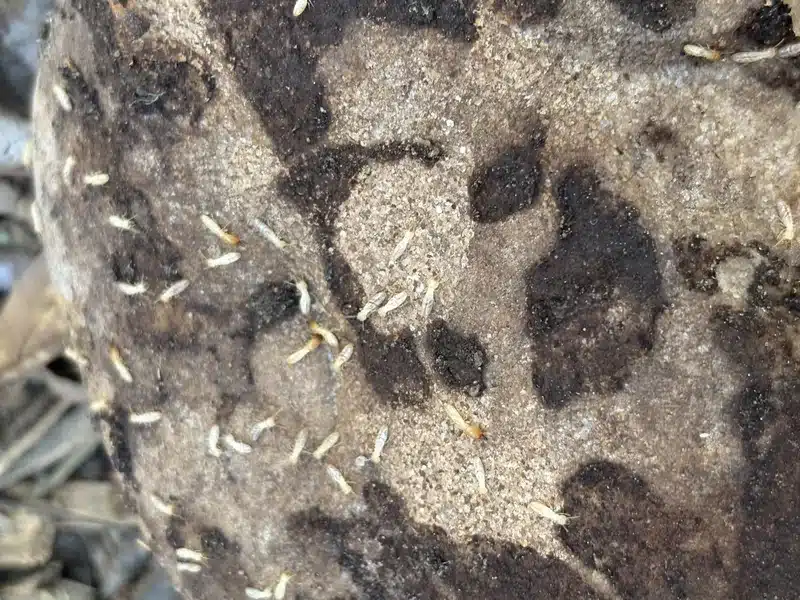Every spring, homeowners across DC, Virginia, and Maryland spread fresh mulch around their homes, hoping to create beautiful landscapes. But many don’t realize they might be rolling out the red carpet for termites. While mulch offers many benefits for your garden, it can also create the perfect environment for these destructive pests.
I’ve seen this scenario play out countless times in my work helping over 100 customers with termite issues. The good news? You don’t have to choose between attractive landscaping and protecting your home. Understanding the relationship between termites in mulch helps you make smart choices that keep your property both beautiful and protected.
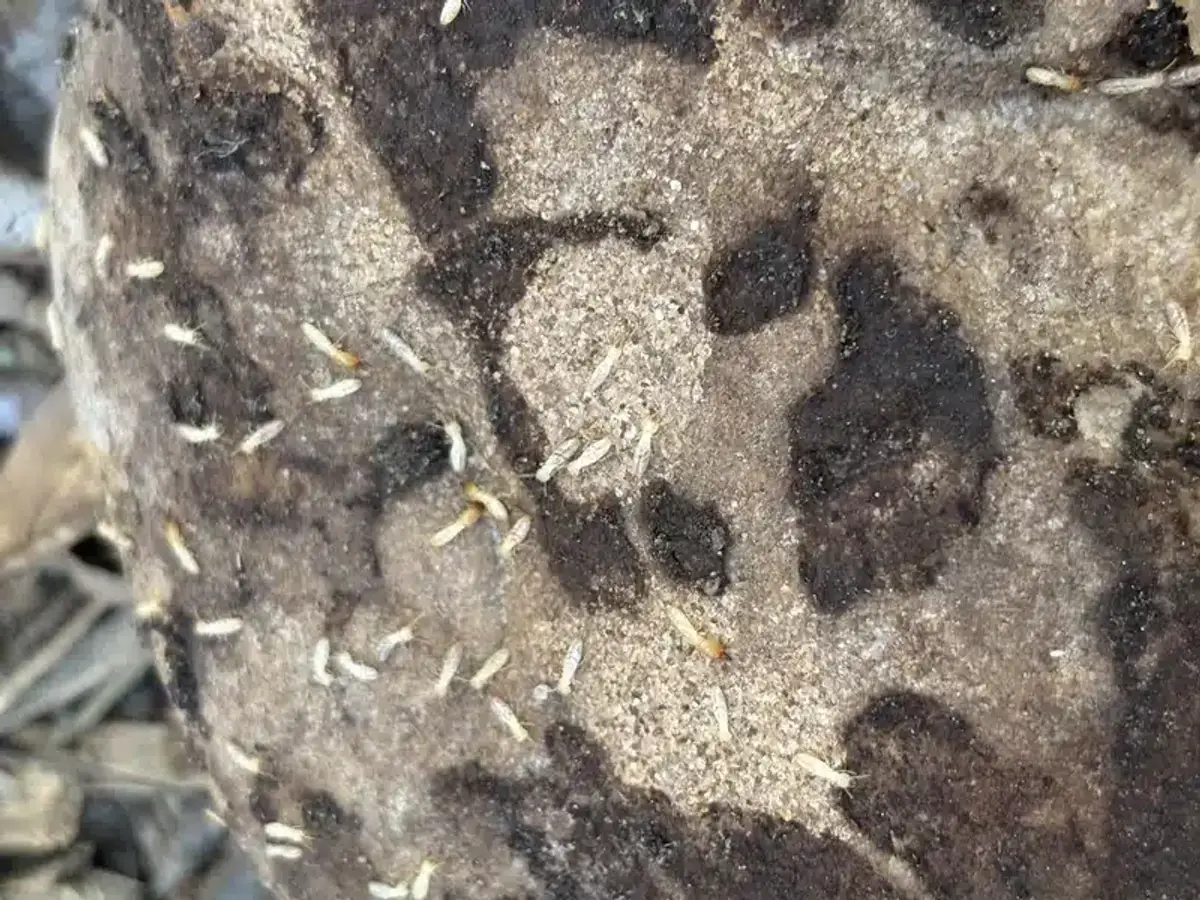
Why Termites Are Attracted to Mulch
Termites focus on just two things: finding moisture and eating cellulose. Mulch delivers both in abundance, creating what experts call “conducive conditions” that termites exploit.
What does the science say?
Multiple university studies confirm the relationship between mulch and termite activity:
- Iowa State University research demonstrates that any mulch application raises soil moisture and stabilizes temperature, creating optimal termite habitat conditions.
- USDA Forest Service studies tested various mulch types to determine termite feeding preferences, showing significant differences in attraction levels between species.
- University of Florida extension guidelines provide research-backed recommendations for mulch application that minimize termite conducive conditions while maintaining landscape benefits.
Here’s what makes mulch so attractive to these pests:
- Consistent moisture: Mulch traps water against the soil, maintaining the 95-100% humidity termites need inside their galleries
- Food source: Wood-based mulches provide the cellulose termites consume
- Temperature control: Mulch creates steady temperatures between 50-95 F that termites prefer
- Protection: The mulch layer shields termites from predators and drying air
Case Study: When a Small Bulge Revealed Hidden Termite Damage
During my training in Alexandria, we responded to what seemed like a minor issue - homeowners noticed a small bulge in their window sill. What we discovered changed everything I thought I knew about termite activity in mulched areas.
- Initial sign: A barely visible bulge in the window sill
- What we found: Termites had eaten right up to the paint layer
- The pathway: Mulched areas served as the termites’ highway to the foundation
- Extent of damage: Years of hidden structural harm not visible from outside
This experience taught me why understanding how termites use mulch as protection is so critical for early detection and prevention.
Beneficial Decomposers vs. Termites: Knowing the Difference
Not every critter in your mulch spells trouble. Many organisms actually help your garden by breaking down organic matter and improving soil health. Learning to tell the difference can save you from unnecessary worry.
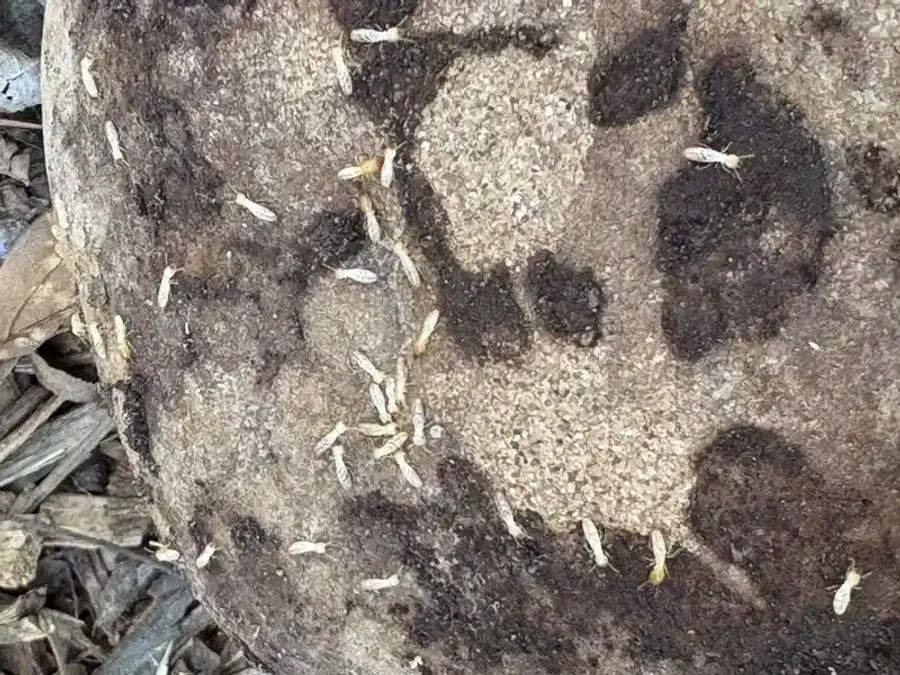
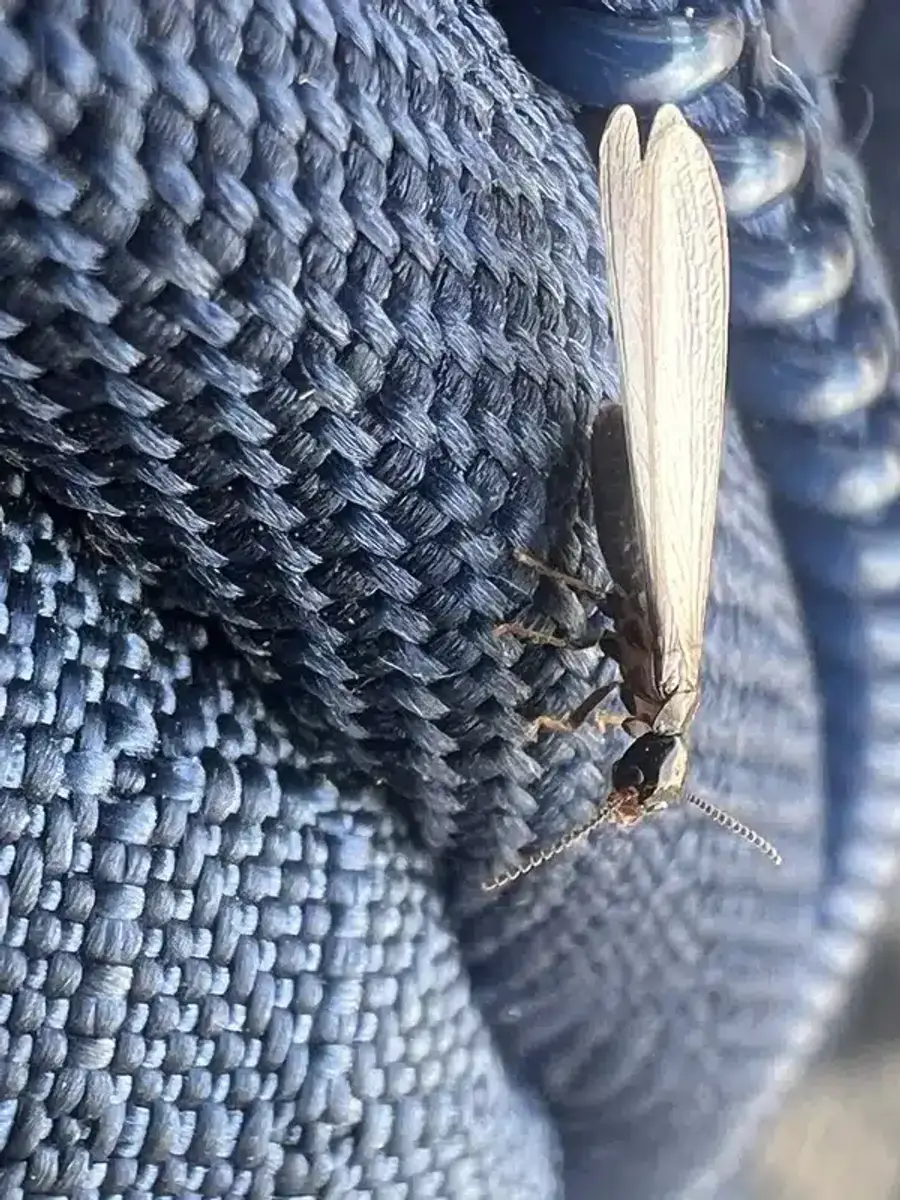
Helpful Garden Residents
These creatures improve your soil and won’t damage your home:
- Earthworms: Pink or brown, visible on the surface, create beneficial soil tunnels
- Springtails: Tiny jumping insects that break down decaying plant matter
- Millipedes: Dark, segmented creatures that shred organic material
- Sowbugs: Gray, armored insects that process dead vegetation
Termite Warning Signs
Termites in mulch look and behave differently:
- Appearance: Soft-bodied, creamy white workers about 1/4 inch long
- Behavior: Build pencil-wide mud tubes for protection
- Location: Usually found deeper in mulch or against foundations
- Activity: Avoid light and open air, unlike most beneficial insects
Mulch Types and How They Attract Termites
Not all mulches create equal termite risk. USDA Forest Service research tested various mulch types to determine which ones termites prefer. Understanding these differences helps you make informed landscaping choices.
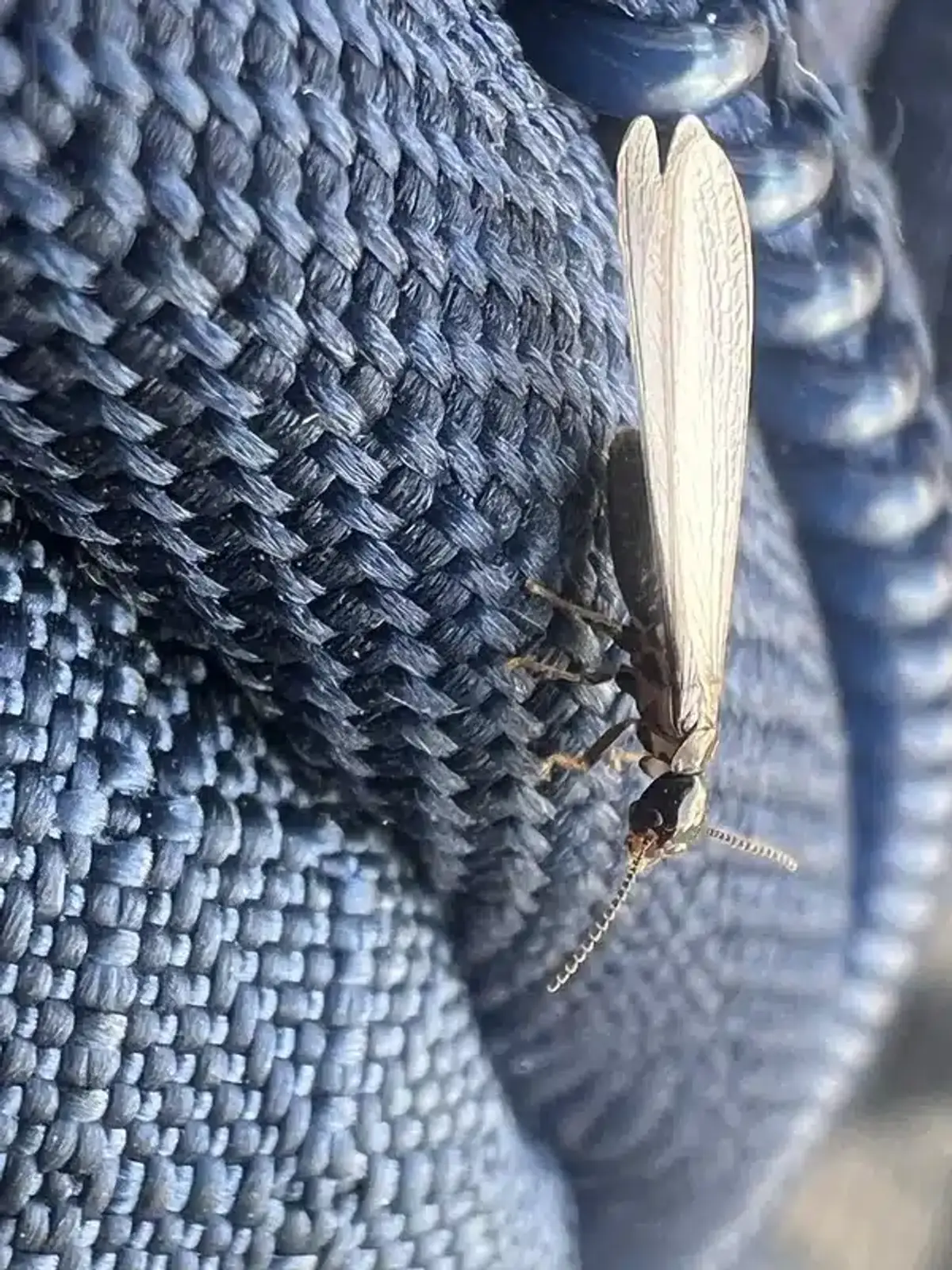
High-Risk Mulch Options
These mulches provide the most attractive environment for termites:
- Mixed hardwood: Utility companies’ wood chips support heavy termite feeding
- Pine bark: Popular and affordable but highly attractive to termites
- Pine straw: While offering little food value, it maintains soil moisture effectively
Moderate-Risk Mulch Options
These choices offer some natural resistance but still require careful application:
- Cedar mulch: Contains natural oils that repel termites initially, but effectiveness decreases as oils weather
- Redwood: Heartwood offers some resistance, though this diminishes over time
Lower-Risk Mulch Alternatives
For areas near your foundation, consider these options:
- Melaleuca (paper-bark): Research shows it allows only 15% termite survival
- Cypress heartwood: Naturally resistant properties make it less appealing to termites
- Rubber mulch: Provides no nutritional value but still traps moisture
- Inorganic materials: Gravel and stone eliminate food sources entirely
| Mulch Type | Risk Level | Key Characteristics |
|---|---|---|
| Mixed Hardwood | High | Supports heavy termite feeding |
| Pine Bark | High | Highly attractive, retains moisture |
| Cedar | Medium | Natural oils provide temporary resistance |
| Melaleuca | Low | 85% termite mortality rate in studies |
| Inorganic Materials | Lowest | No food value, excellent drainage |
Interestingly, studies found that even inorganic mulches like pea gravel can harbor more termite foraging activity than organic options, since they still create the moisture conditions termites seek.
How to Use Mulch Without Attracting Termites
Smart mulch application makes the difference between an attractive landscape and a termite highway. Following University of Florida guidelines significantly reduces your risk while maintaining your yard’s appeal.
The Foundation Buffer Zone
Creating space between mulch and your home’s foundation is your first line of defense:
- 12-inch minimum gap: Maintain bare soil or very thin mulch (2 inches or less) for at least 12 inches from your foundation
- 6-inch clearance: Keep mulch and soil at least 6 inches below any wood siding or structural elements
- Inspection access: This gap allows you to spot termite mud tubes before they reach your home
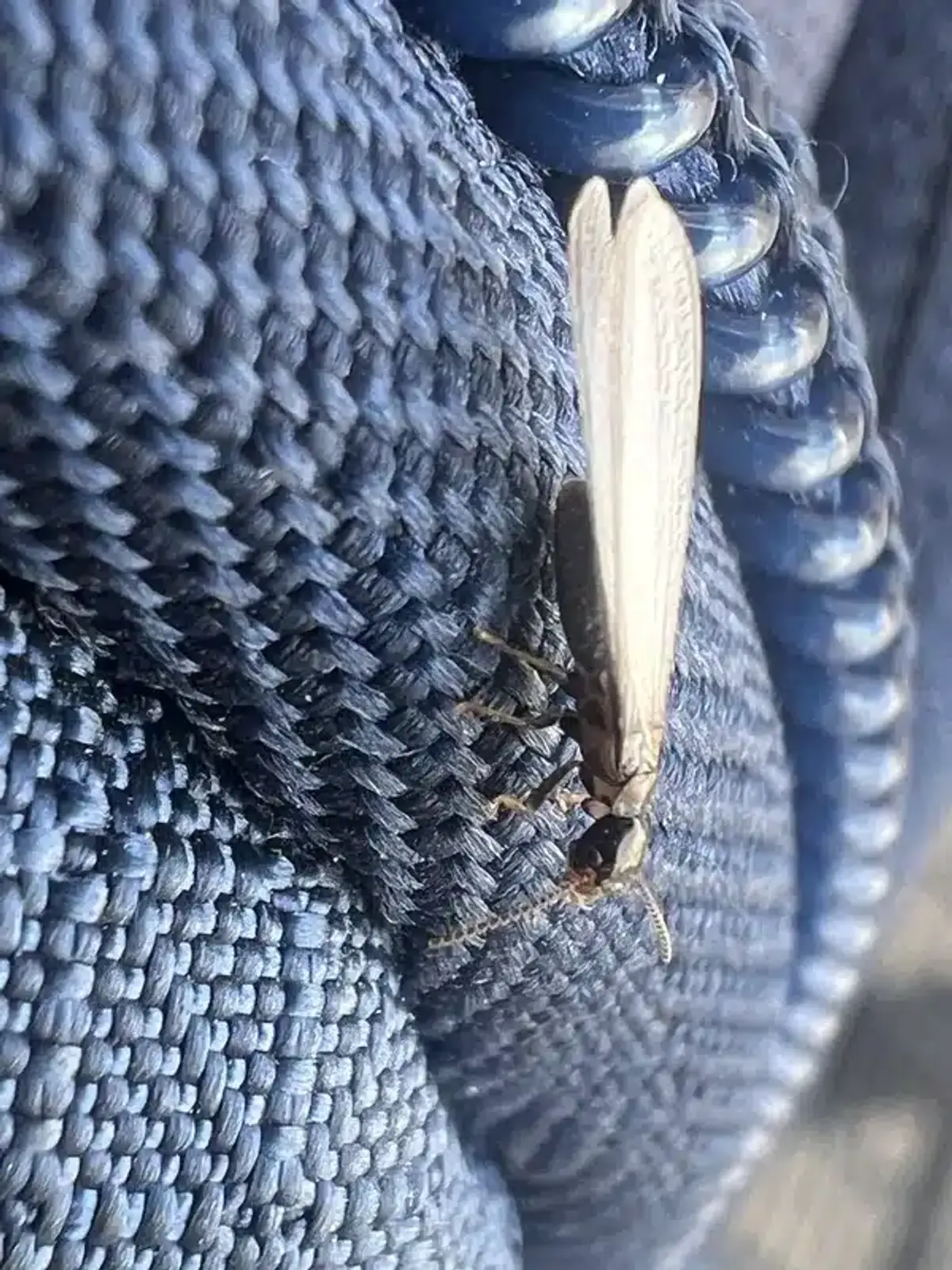
Depth and Distribution Guidelines
Proper mulch depth balances plant benefits with termite prevention:
- General areas: Keep mulch to 3 inches or less in landscape beds
- Near foundations: Limit to 2 inches within the first 12 inches of the house
- Drainage consideration: Grade beds to move water away from foundations
- Irrigation placement: Position sprinklers at least 1 foot from walls
Signs of Termites in Mulch: What to Look For
Early detection prevents minor issues from becoming major problems. In my experience helping homeowners across the DC metro area, catching termites early often means the difference between a manageable treatment and extensive repairs.
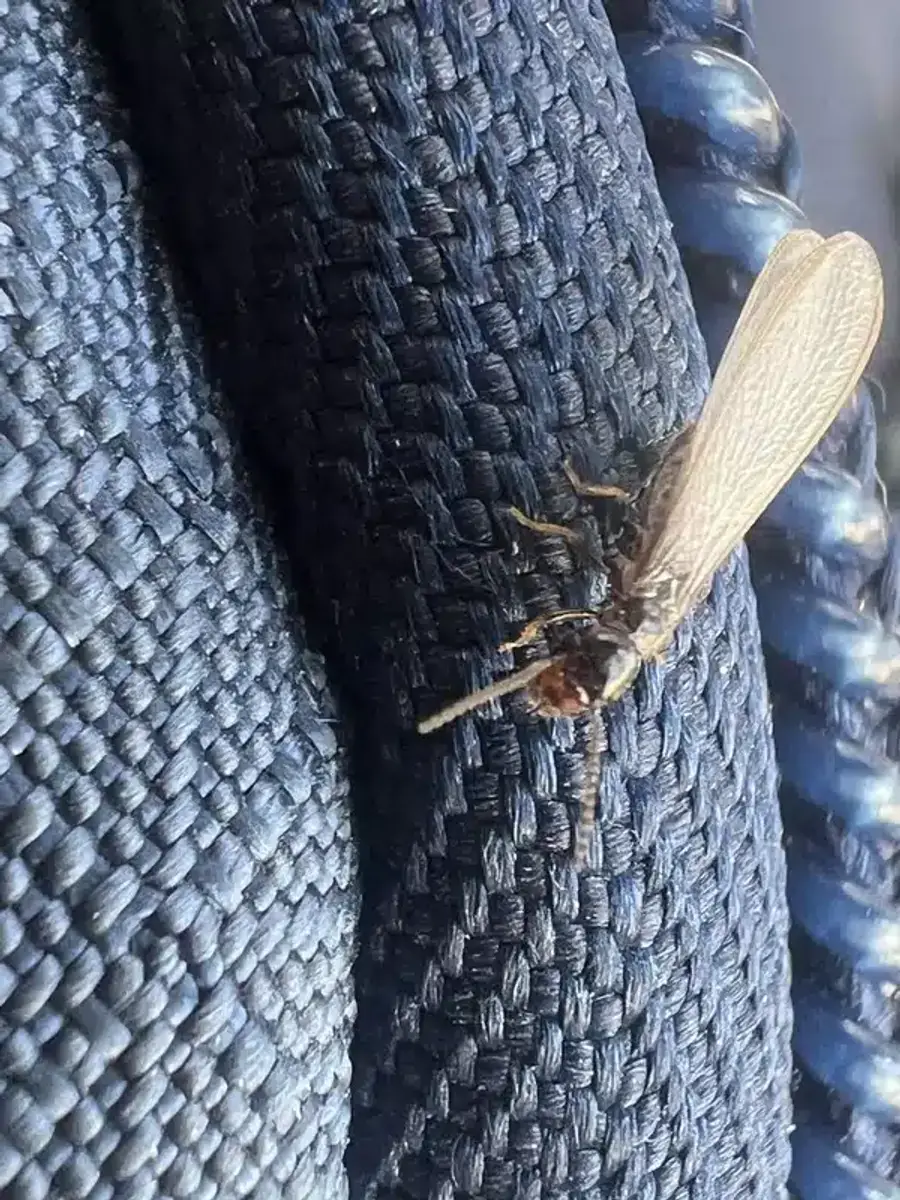
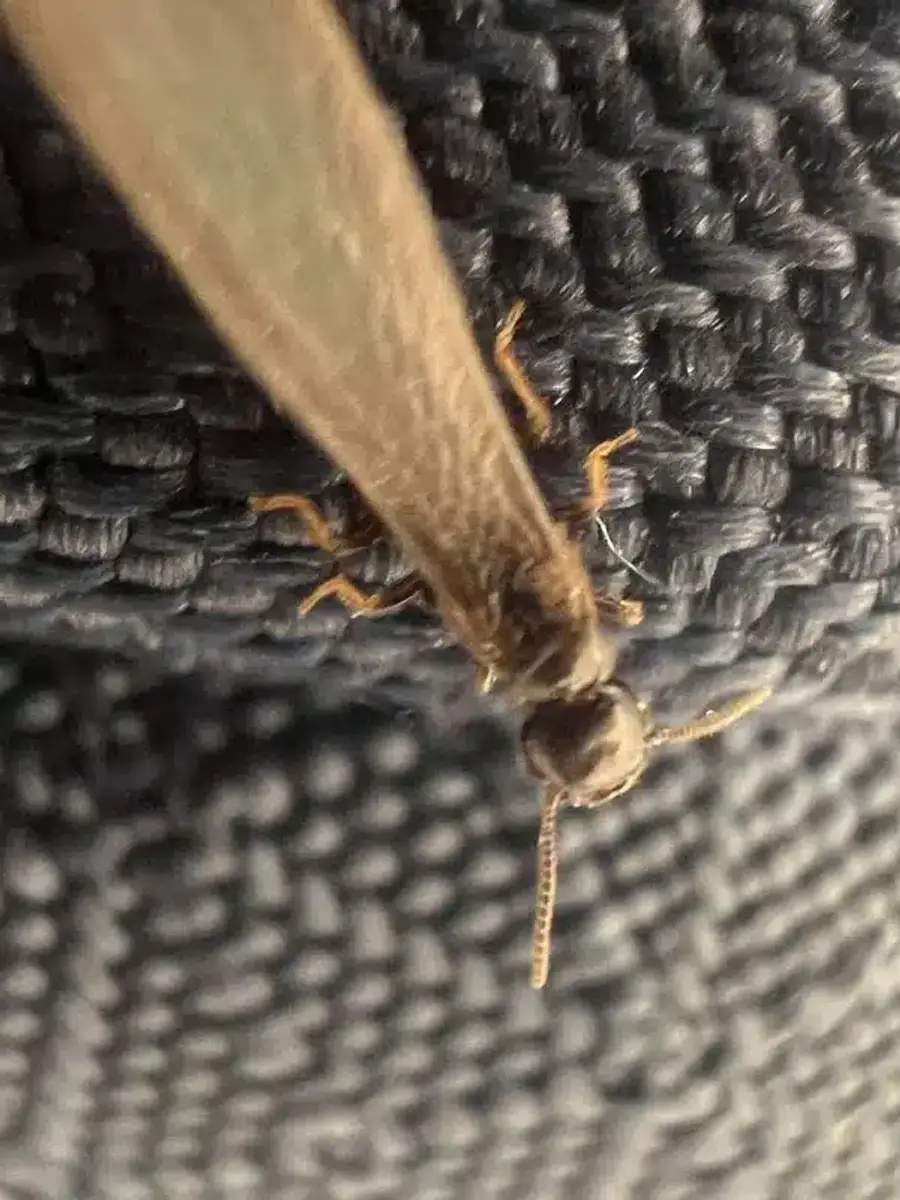
Primary Warning Signs
Watch for these indicators during your regular yard maintenance:
- Mud tubes: Pencil-wide tunnels running from soil through mulch to wooden structures
- Hollow-sounding wood: Landscape timbers or edging that sounds hollow when tapped
- Swarmer wings: Discarded termite wings caught in spider webs near mulched beds
- Damaged mulch fabric: Holes or tears in landscape fabric beneath mulch
Inspection Techniques for Mulched Areas
Regular inspection helps you catch problems early:
- Visual scanning: Look for mud tubes on foundations, especially behind downspouts
- Probe testing: Use a flathead screwdriver to test wooden edging for soft spots
- Mulch lifting: Carefully pull back mulch near foundations to check for tube construction
- Moisture assessment: Note areas where mulch stays consistently wet
When to Worry vs. Normal Occurrence
Not every termite sighting requires immediate panic. Understanding the difference between exploratory activity and established infestation helps you respond appropriately.
Normal Termite Activity
These situations typically don’t signal immediate danger:
- Isolated workers: A few termites found after heavy rain, especially without mud tubes
- Scouting activity: Occasional termites in mulch without evidence of feeding or tube building
- Seasonal swarmers: Flying termites during spring swarming season (though this indicates a nearby colony)
Red Flag Situations
These signs warrant immediate professional inspection:
- Active mud tubes: Tubes that reconnect overnight after being broken
- Structural damage: Wood damage to deck posts, sill plates, or foundation elements
- Indoor swarmers: Winged termites found inside your home
- Extensive tube networks: Multiple tubes or complex tunnel systems in mulched areas
I often tell customers that when we find termites in heavily mulched environments, it sometimes requires targeted liquid treatments rather than just bait systems, since the termites may not readily find bait stations in these rich environments.
Termite Treatment for Mulched Areas
When termites in mulch become a problem, several treatment approaches can address the issue effectively. The choice depends on the severity of the infestation and your property’s specific conditions.
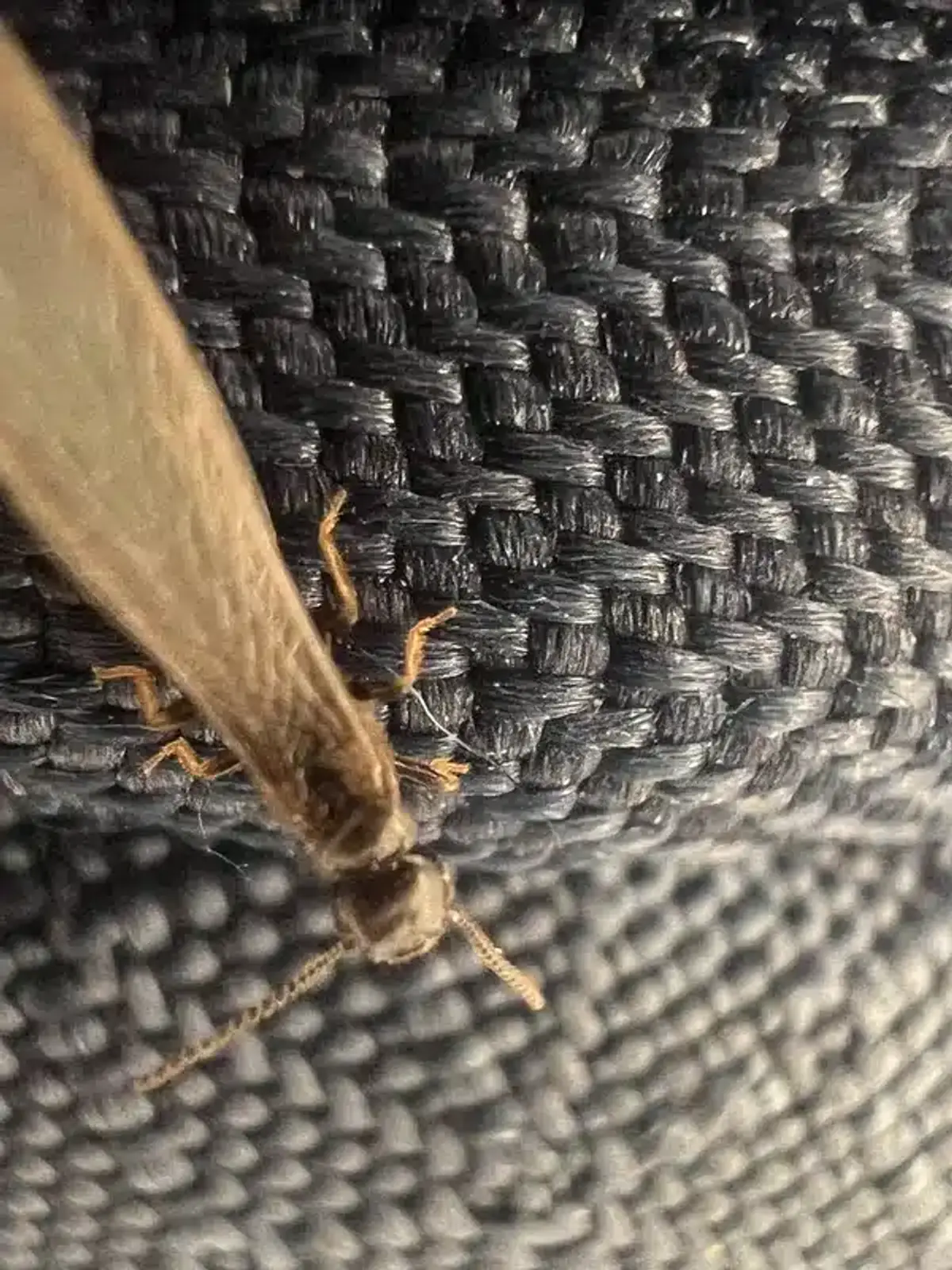
Proactive Bait Systems
For early-stage issues or prevention, bait systems like Sentricon offer an effective approach:
- Low-impact installation: Stations can be placed through thin mulch layers
- Long-term protection: Provides ongoing monitoring and elimination
- Landscape-friendly: Minimal disruption to existing mulch and plantings
Liquid Barrier Treatments
For more severe infestations, especially around heavily mulched foundations:
- Soil treatment: Products like Termidor or Premise applied to trenched areas
- Mulch removal: Temporary mulch removal allows proper soil treatment
- Barrier creation: Forms a protective zone termites cannot cross
Based on my experience with over 100 termite cases, I find that proactive bait systems work well for most situations. However, when dealing with established colonies in mulched areas, targeted liquid treatments often provide faster results.
Alternatives to Wood Mulch Near Homes
Smart homeowners in our DC, Virginia, and Maryland service areas increasingly choose termite-resistant alternatives for areas near their foundations. These options maintain curb appeal while reducing termite risk.
Inorganic Ground Covers
These materials eliminate termite food sources entirely:
- Washed stone: Creates a 3-4 foot inspection buffer with excellent drainage
- Pea gravel: Smaller stones work well around plantings
- Decorative rock: Various colors and sizes complement different architectural styles
- Geotextile backing: Prevents weeds while maintaining inspection access
Living Ground Covers
Low-growing plants set back from foundations offer natural beauty:
- Creeping thyme: Drought-tolerant and aromatic
- Pachysandra: Thrives in shaded areas
- Vinca minor: Provides year-round green coverage
- Proper spacing: Plant at least 12 inches from foundation walls
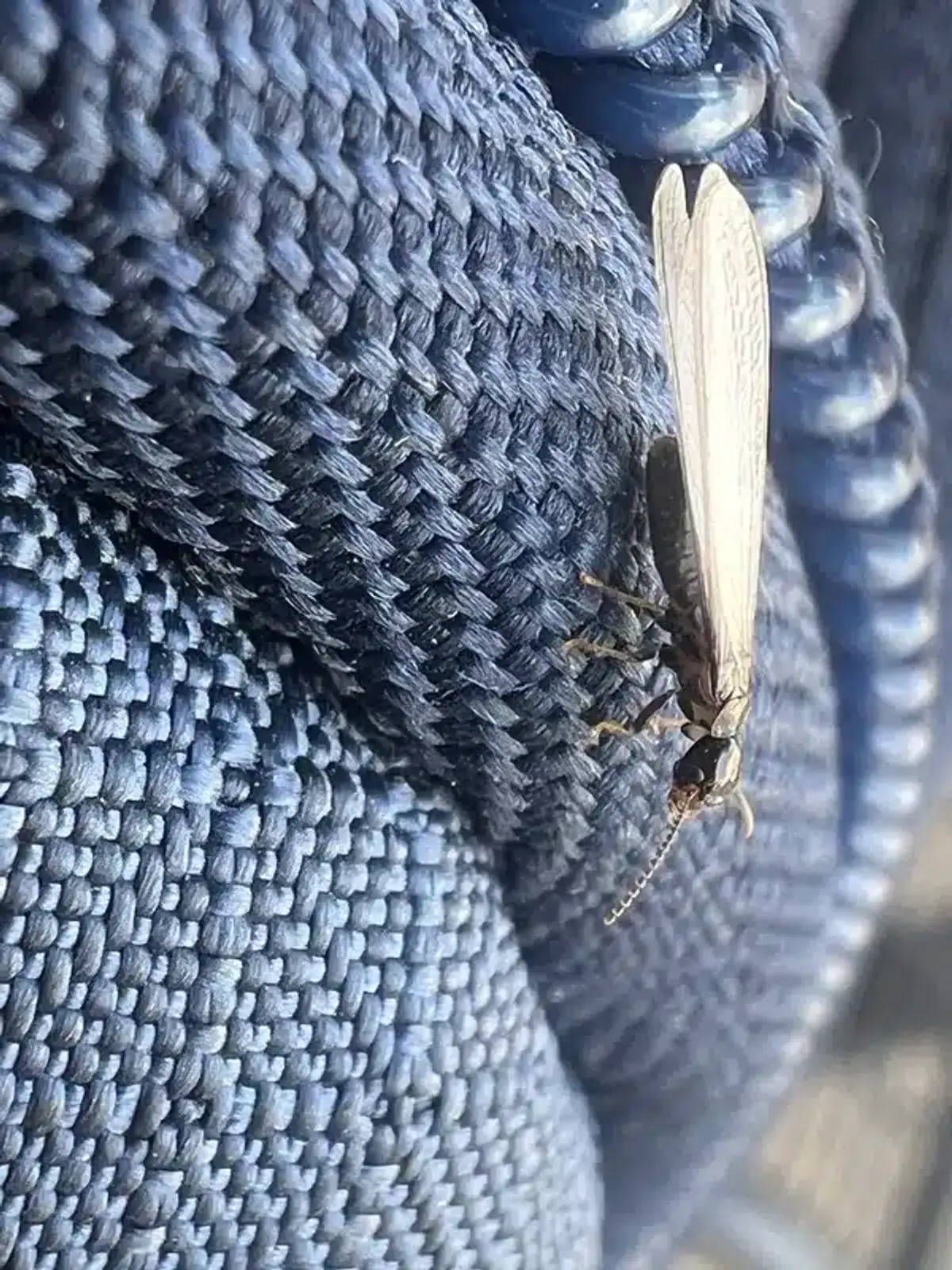
Balancing Landscaping Aesthetics with Termite Prevention
You don’t have to sacrifice beauty for protection. Smart landscape design integrates termite prevention with attractive curb appeal, creating a layered approach that works for both your home and your property value.
The Layered Defense Strategy
Create zones that transition from protective to decorative:
- Foundation buffer (0-12 inches): Stone or bare soil for inspection access
- Transition zone (12-24 inches): Resistant mulch materials like cedar or cypress
- Decorative zone (24+ inches): Standard mulch around shrubs and plantings
- Planting areas: Shrubs positioned for easy access and air circulation
Design Elements That Work
These features enhance both beauty and protection:
- Color contrast: Different materials help highlight any new mud tube activity
- Varied textures: Combine stone, mulch, and plantings for visual interest
- Strategic lighting: Illuminate foundation areas for easier inspection
- Drainage features: Attractive gutters and downspout extensions that move water away
Seasonal Maintenance for Mulched Areas
Regular maintenance keeps your landscaping both beautiful and termite-resistant. Following a seasonal routine helps you catch potential problems before they become expensive repairs.
Essential Mulch Maintenance Steps
- Spring Prep: Pull mulch back 12 inches from foundations before adding fresh material, keeping total depth under 3 inches
- Monthly Inspections: Check foundation areas for mud tubes, especially after heavy rains when termite activity increases
- Moisture Management: Ensure proper drainage away from foundations and avoid overwatering near mulched beds
- Seasonal Refresh: Add only 1/2 to 1 inch of new mulch annually, composting excess to prevent over-depth accumulation
- Professional Support: Schedule annual termite inspections to catch activity before it becomes structural damage
Spring Maintenance Tasks
As termites become more active, increase your vigilance:
- Annual rake-back: Pull mulch away from foundations before adding fresh material
- Depth check: Ensure total mulch depth doesn’t exceed 3 inches
- Inspection focus: Look for winter mud tube construction
- Fresh application: Add only 1/2 to 1 inch of new mulch annually
Summer and Fall Monitoring
Maintain consistent inspection during active months:
- Monthly checks: Quick visual inspections of foundation areas
- Post-rain inspection: Check for new termite activity after heavy moisture
- Pruning maintenance: Keep shrubs trimmed for air circulation and inspection access
- Excess removal: Compost or dispose of accumulated mulch to prevent over-depth
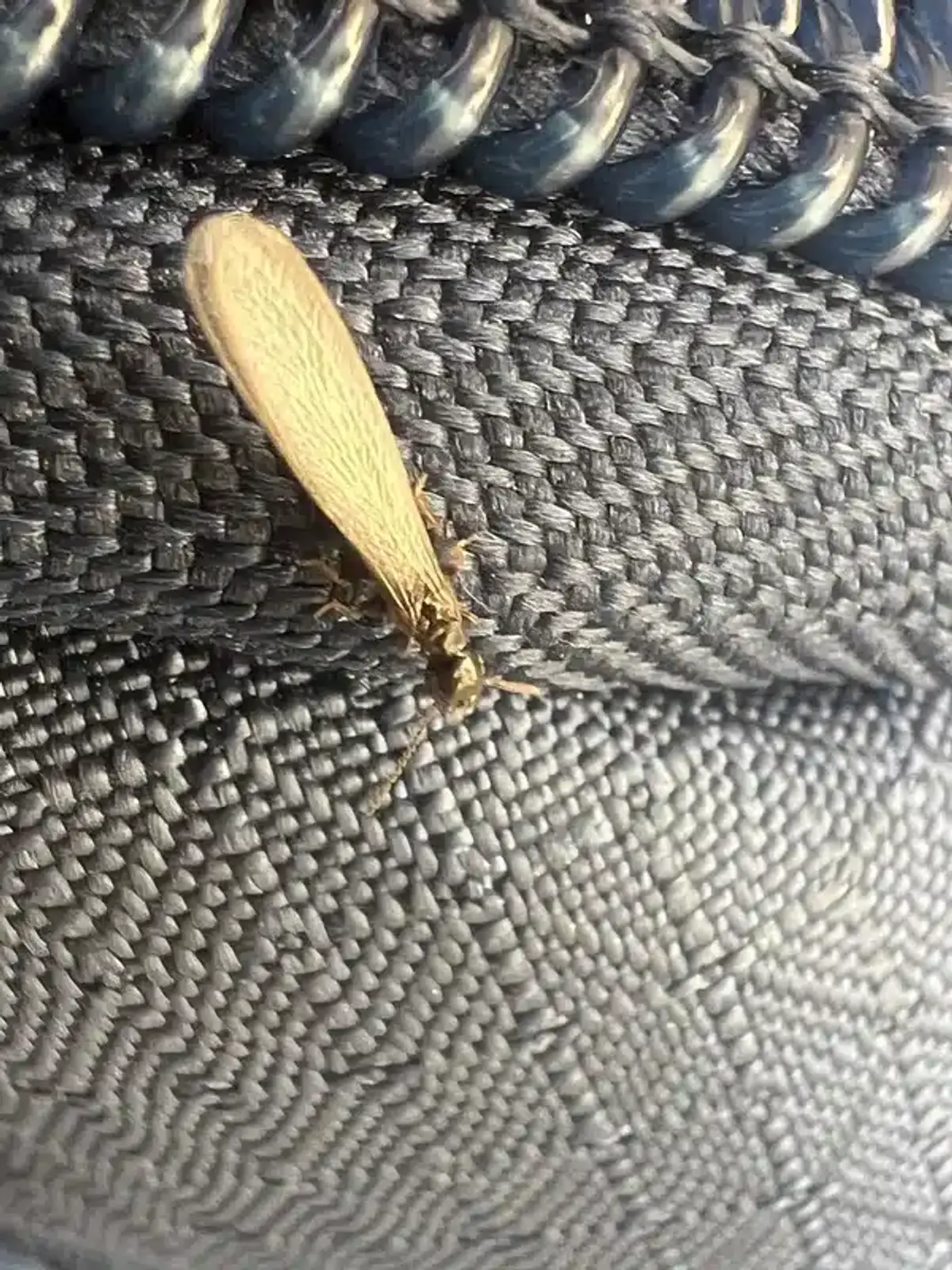
Managing termites in mulch doesn’t mean giving up on beautiful landscaping. With proper application techniques, smart material choices, and regular maintenance, you can enjoy attractive garden beds while protecting your most valuable investment. The key lies in understanding that termites seek moisture and cellulose - and taking steps to limit both near your foundation.
If you’re concerned about termite activity in your mulched areas or want professional guidance on termite-resistant landscaping, our registered technicians can help. We’ve assisted thousands of homeowners across DC, Virginia, and Maryland in creating landscapes that look great and stay protected. Learn more about our prevention strategies or call us at 703-683-2000 for a consultation.
Frequently Asked Questions
Does mulch actually attract termites to my property?
+
Mulch doesn't attract termites from far away, but it creates ideal conditions for termites already in your soil. According to [University of Florida research](https://edis.ifas.ufl.edu/publication/IN651), termites rarely survive the commercial mulch production process. The real issue is that mulch provides consistent moisture and cellulose close to your foundation, giving established colonies a cozy highway to feed.
With five years of hands-on experience in the pest control industry, George Schulz is a registered technician with the Virginia Pest Management Association and a proud third-generation professional in a family business that’s been protecting homes for over 57 years. He manages and trains a team of service pros while also leading internal research efforts—recently spearheading a deep-dive review of thousands of documents on pest control materials to hand-pick the most kid and pet friendly, most effective solutions tailored specifically for homes in the DC metro area.
